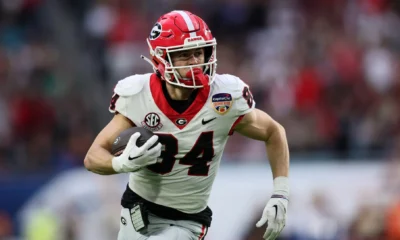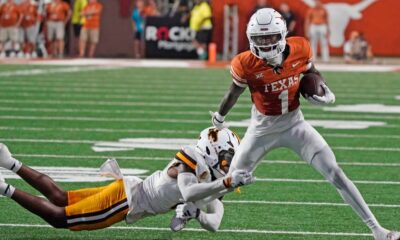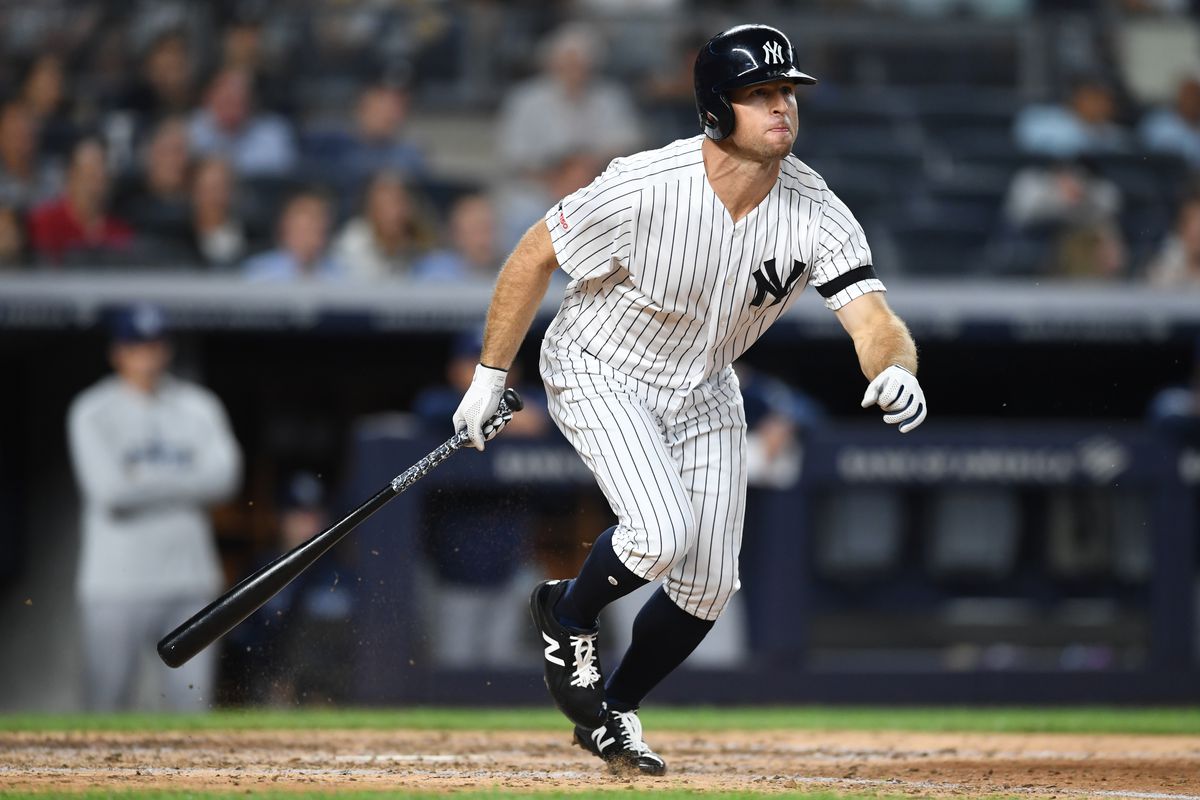
Sixty games. That’s all Brett Gardner and DJ LeMahieu have to strengthen their value in a shortened MLB season. The Yankees possess several prospects and MLB ready players that could see more playing time in 2021. Suffice it to say, the Yankees will need to make some tough decisions after the season finishes about who to keep in pinstripes.
Since the COVID-19 pandemic has shortened the season and stopped fans from coming to baseball games, every MLB team is struggling to bring in more revenue. As a result, they are less likely to give out high-priced contracts. Factors determining who will remain include the COVID-19 pandemic, the players’ performance with the Yankees, and interest from other teams.
Before diving into these two free agents, I need to mention that I will be doing an article later on about the Yankees’ free agent pitchers (Masahiro Tanaka and James Paxton). Also, I am omitting Giancarlo Stanton and Zach Britton from these lists because they can opt out of their contract after the 2021 season, but that probably will not happen. Stanton is still owed over $225 million dollars, and missed nearly all of 2019. As for Britton, he will be making $13 million next year, a high salary for a reliever, especially one that is past his peak. Thus without further ado, here are the cases for each free agent hitter in 2021.
Brett Gardner
Gardner is a different player than he was back when he debuted in 2008. He was all speed, and no power. Some of his best years were in 2010 and 2011 when he had back-to-back 45+ SB seasons. In 2014, he had double digit HRs for the first time in his career, and since that breakout year, he’s averaged nearly 17 HRs per season.
However, Gardner had a career low 10 SB last season (in a healthy year), but it is not really an issue. Especially since the 2010s, when players become a legitimate power threat, they start to steal less bases. Gardner used Yankee Stadium’s short right field porch to his advantage and hit a career high 28 HRs. Baseball has changed recently. MLB players hit a record 6,776 homers (641 more than the 2017 record) and 2,280 stolen bases (fewest since 1973). Nonetheless, Gardner is placed in the 91st percentile among all qualified MLB players with a sprint speed of 28.9 ft/s. Thus, Gardner could steal around 30+ bases if the Yankees wanted him to, but with so many power threats in the lineup, Gardy does not run as often as he used to.
While his offensive capability has varied throughout his career, Gardner has always excelled defensively. Although he is better suited in left field (career 100 DRS and 78.0 UZR), he’s remained a standout option in centerfield (career 40 DRS and 17.8 UZR). Despite Gardner being an average defender out in centerfield last season (-2 DRS and 1.7 UZR in 2019), he filled in rather nicely for Aaron Hicks, the usual Yankee center fielder, who was recovering from a back strain and right flexor strain.
Gardner has hardly ever succumbed to injury throughout his Yankee career. He has been on the field in at least 140 games for the past seven years. Additionally, he missed the 140 game threshold only three times during his 12-year career. Not too many current Yankees, or any MLB players for that matter, can boast a healthier career than Gardner.
Gardner is also a fan favorite in New York. He is currently the longest tenured Yankee, and the last active player from their 2009 World Series championship. Although he is an undersized Major Leaguer at 5’11’’, he’s been a productive player in New York, flashing a mixture of grit, hustle, and sneaky power throughout his career. Furthermore, he is the oldest player on the Yankees and holds a leadership position on the team.
So what seems to be the problem? Why wouldn’t the Yankees want to resign him? For starters, the Yankees have several players that are ready to take over in left field, such as Giancarlo Stanton. Since Stanton, Aaron Hicks, and Aaron Judge are all healthy, Gardner receives less playing time. Although Stanton can be a DH too, the Yankees have several options at DH such as Luke Voit, Miguel Andújar, Gary Sánchez, Clint Frazier, and Mike Ford.
Even if Gardner starts in left field and Stanton slides into a DH role, the Yankees continue to leave Clint Frazier, the once mega prospect, in a backup role. Additionally, when Gardner starts in left field, they are also pushing breakout outfielder Mike Tauchman to the bench. Andújar could be affected too as his defensive woes at third base may relegate him to the outfield.
It looked as if Gardner would be placed in a backup role beginning in 2020, but the injuries to Stanton and Hicks will allow him to continue playing as a starter. Gardy surprised everyone by shaking off Father Time with a career high .253 ISO, and .828 OPS. As a result, the Yankees rewarded him with a $12 million contract for 2020 and a $10 million team option in 2021.
However, there are still some doubts with Gardner’s offensive capability. He ranks below average among qualified MLB players with a 87.4 MPH Exit Velocity (22nd percentile), a Hard Hit% of 31.0% (17th percentile), and a Barrel% of 3.6% (17th percentile). Because of the fact that he is below average in these categories, there is reason to believe that he will regress as a hitter this season. It also does not help that he is entering his age-37 season, so age might catch up to him in 2020.
Despite Stanton, Judge, and Hicks all being healthy at the start of the season, Gardner will still receive ample playing time in 2020. The sixty game season will be a make-or-break for Gardner. If he remains productive, the Yankees may pick up his team option; otherwise, they might decline his 2021 option, or try to sign him to a smaller contract–if they decide to offer him a new one at all.
Nonetheless, the Yankees and Gardner have mutual interest in each other, and Gardner has little interest in retiring. Perhaps if the Yankees win the World Series in 2020, Gardner might consider hanging up his cleats. If the Yankees drought extends to eleven years, and they show little interest in Gardner, he might go to a different team. While age catches up to every MLB player, Gardner still has speed, defense, and a little bit of pop. He can start on a majority of teams, and any team could use him in a backup role. Given Gardner’s history of producing for the Yankees, being a fan favorite, and a clubhouse leader, the Yankees should resign him in 2021, especially since he hopes to finish his career in Pinstripes.
Prediction: 1-year, $7 million contract for 2021
DJ LeMahieu
No one could have expected DJ LeMahieu’s breakout season. Many Yankee fans believed he would have a decent batting average and a good glove around the infield with little pop. Most of these fans thought he would be a nice stand in at second base while Gleyber Torres shifted over to shortstop; no one predicted that LeMahieu would finish fifth in the AL MVP and have his best season at age 31. He was a power threat at the top of the order last year, setting career highs in HR (26), Runs (109), RBI (102), ISO (.191), SLG (.518), and fWAR (5.4).
Then there was his defense. Although LeMahieu excelled at second base in 2019 (3 DRS and 4.0 UZR), he also handled himself defensively at third base (0 DRS and 0.2 UZR) and first base (3 DRS and 0.7 UZR). His versatility was huge for the Yankees. He covered second base when Gleyber Torres had to play shortstop, gave Gio Urshela some off days at third base, and added passable defense at first base when subbing in for Luke Voit, who was injured during the second half of 2019.
LeMahieu’s most underrated quality in 2019 was his clutch hitting. He batted a whopping .389 with Runners in Scoring Position. His offensive prowess, defensive capabilities, and coming through in the clutch all earned him the nickname of “The Machine”. However, LeMahieu was not always “The Machine” throughout his career. His offensive performance has varied a lot season to season. For starters, his power output came out of nowhere in 2019. Before 2019, LeMahieu had 49 career home runs and only surpassed double digit HRs twice (in 2016 and 2018). He was also rated as an above average hitter only once before 2019, where he had a 130 wRC+ in 2016.
Although LeMahieu has lacked in the power department for most of his career, he makes up for it by having a high batting average and on base percentage. From 2016-2018, LeMahieu hit at least .300 each season, and even won the batting title in 2016. In his career, LeMahieu has a .302 BA and .354 OBP, both above average. One reason why LeMahieu has a high BA and OBP is because he accumulates a lot of hits, and has a high BABIP. He has 1,223 hits throughout his career, including four 150+ hit seasons in the last five years. LeMahieu also sports a career .344 BABIP, meaning that when LeMahieu puts the ball in play, he gets a hit more frequently than the majority of Major League hitters.
Besides flashing good contact and on base abilities, LeMahieu has consistently been a gifted defender. He has accumulated 56 DRS and 30.4 UZR, which places him third and fourth respectively among all MLB second basemans since he began playing in the Majors back in 2011. LeMahieu also boasts three Gold Gloves (2014, 2017, and 2018), and was easily one of the best defensive second basemen during the 2010s.
LeMahieu’s only “flaw” is his baserunning. He is a slightly below average base runner with a -0.8 BSR and an average sprint speed of 26.7 ft/s. He used to run a lot in the Rockies and even stole 62 bases from 2013-16, but those days are long behind him.
Looking at LeMahieu’s past and his 2019 season, he should be able to maintain a high batting average, high on base percentage, and good defense (this year mostly at second base). He might not have as much power as last year, but could hit a maximum of 10 HRs in the sixty-game season. He might regress a little bit offensively since his 2019 season was uncharacteristically elite for him, but advanced metrics say otherwise; LeMahieu still ranks high amongst his peers with a 90.9 MPH Exit Velocity (90th percentile) and .447 xSLG (88th percentile) in 2019, which show he can duplicate his power output in the upcoming season.
Regardless of how LeMahieu performs in 2020, he will garner a lot of interest in the offseason. Although he contracted the COVID-19 virus, he was asymptomatic and should be ready by the start of the season. The 2020 season is unpredictable for any player because of COVID-19 and the small sixty-game sample size. Still, most of LeMahieu’s statistics indicate that he will have success after 2020. Essentially, having a great contract year can only help LeMahieu, and he should not be too affected if he regresses. As a result, several teams such as the Red Sox, White Sox, and A’s would be interested in acquiring the top-3 second baseman.
Nonetheless, the Yankees and LeMahieu look like they will be together for the long haul. The short porches at Yankee Stadium helped LeMahieu’s power output in 2019, and he set the tone with a line drive approach in a lineup filled with 30+ HR power threats (in a full year). As for the Yankees, they do not have anyone that could replace LeMahieu’s production in 2021. In theory, the Yankees could move Gleyber Torres over to second base again, but they would need to find a replacement at shortstop. Their in-house options such as Tyler Wade, Thairo Estrada, and Rosell Herrera fit better in a backup role. Among other 2021 middle infield free agents such as Marcus Semien, Kolten Wong, and Didi Gregorius, LeMahieu is just as good if not better than these options. Therefore, LeMahieu resigning with the Yankees seems inevitable.
Prediction: 4 years, $60 million contract with the Yankees
Key:
SB: Stolen Base.
HR: Home Run.
Ft/s: Feet per second.
UZR and DRS: Ultimate Zone Rating and Defensive Runs Saved are both statistics from Fangraphs that measure fielding. If UZR or DRS is above 0, the fielder is above average. Equal to 0 means the fielder is average, and less than 0 means the fielder is below average.
DH: Designated Hitter.
ISO: Isolated Power is a sabermetric that measures a player’s power output based on the quantity and quality of their extra base hits. Formula: (Doubles+Triples*2+Home Runs*3)/At Bats. MLB average in 2019: .183 ISO.
AVG(BA)/OBP/SLG:The triple slash line of Batting Average (Hits/At Bats), On Base Percentage (Hits+Walks+Hit by Pitches/Plate Appearances), and Slugging Percentage (Singles+Doubles*2+Triples*3+Home Runs*4). MLB average in 2019: .252/.323/.435
OPS: OBP+SLG. MLB average in 2019: .757 OPS.
Exit Velocity: The average velocity that comes off a hitter’s bat. MLB average: 88.2 MPH.
Hard Hit%: The percentage of baseballs hit at 95+ MPH. MLB average: 34.6%.
Barrel%: A batted ball hit at least 98+ MPH, and has a launch angle (the angle the ball comes off the bat) of 26-30 degrees. MLB average: 6.3%.
RBI: Run Batted In
fWAR: Fangraphs Wins Above Replacement. If a player has 0.1 fWAR they are worth 0.1 wins more than a replacement level player (0.0 fWAR). An average starting player that plays most of the season usually has an fWAR of 2.0.
Runners in Scoring Position: Runner(s) on second and third base.
wRC+: Weighted runs created plus. A stat that quantifies total offensive value and factors in the different dimensions of each ballpark. A wRC+ of 100 is replacement and anything above that is X% above league average (i.e. a wRC+ of 101 is 1% above league average offensively).
BABIP: Batted balls in play. In other words, an at bat that does not result in a home run or strikeout. MLB average: ~ .300 BABIP.
BsR: An all-encompassing sabermetric that takes into account all possible base running plays. Above 0 is above average, and below 0 is below average.
xSLG: A formula that predicts a player’s slugging percentage (or power potential) based on Exit Velocity, Barrel%, Hard Hit%, Sprint Speed, and Launch angle. MLB average: .408 xSLG.
Sources:
https://baseballsavant.mlb.com/
https://www.sbnation.com/mlb/2019/9/30/20863062/mlb-home-run-records-2019
https://www.star-telegram.com/sports/mlb/texas-rangers/article235682197.html
Related

Featured Articles
-
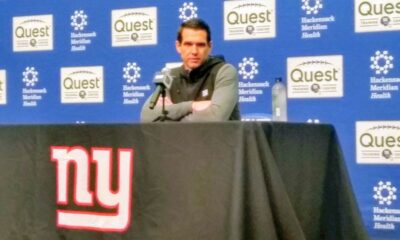

Big Blue Report
/ 7 hours agoGiants Are On The Clock
In a press conference held on Thursday, New York Giants General Manager Joe Schoen...
By Randy Zellea -
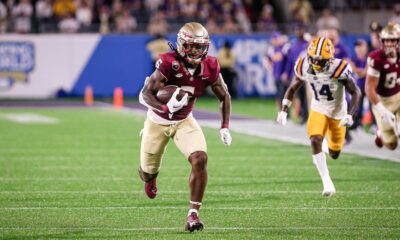

College Football
/ 16 hours agoNFL Draft 2024 Scouting Report: Jaheim Bell, TE, Florida State
Jaheim Bell, TE, Florida State Height: 6’2” Weight: 241 Hand Size: 9 ⅞ ...
-
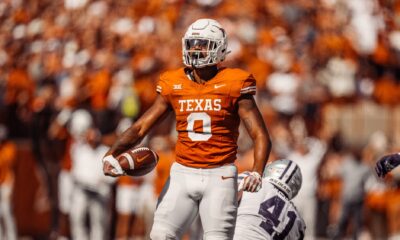

College Football
/ 16 hours agoNFL Draft 2024 Scouting Report: Ja’Tavion Sanders, TE, Texas
Ja’Tavion Sanders, TE, Texas Height: 6’4” Weight: 252 Hand Size: N/A Arm Length:...
-
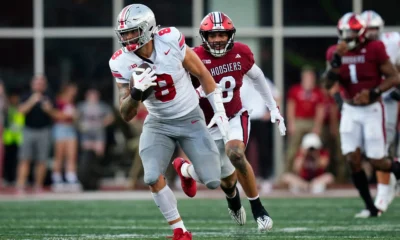

College Football
/ 16 hours agoNFL Draft 2024 Scouting Report: Cade Stover, TE, Ohio State
Cade Stover, TE, Ohio State Height: 6’4” Weight: 247 Hand Size: 9 3/4...


